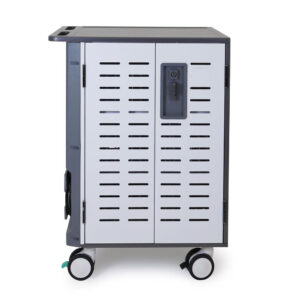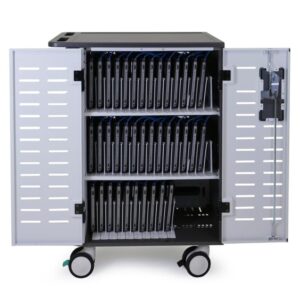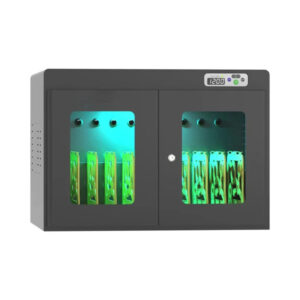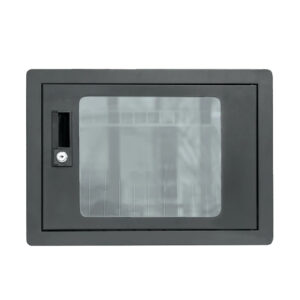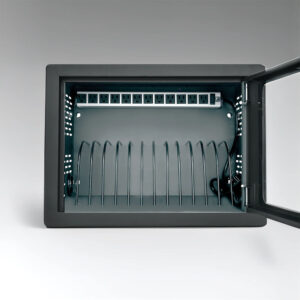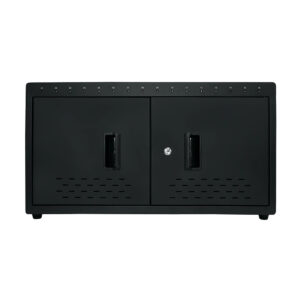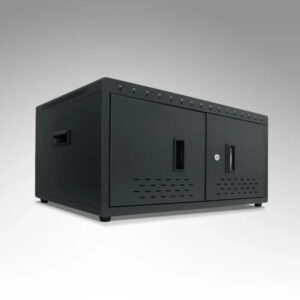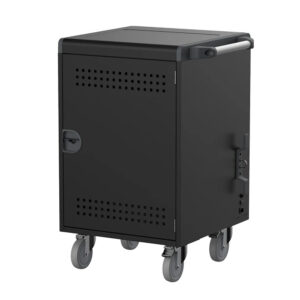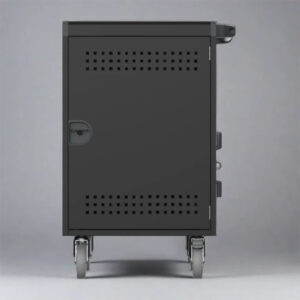概要
A 充電キャビネット is a secure and efficient storage solution designed to charge multiple electronic devices simultaneously, catering to various environments such as schools, healthcare facilities, corporate offices, and public spaces. These cabinets are notable for their ability to provide organized, safe, and accessible charging for laptops, tablets, smartphones, and even electric vehicles, thus addressing the increasing demand for technology integration in daily operations and personal use. With the rise of mobile devices and the growing reliance on technology in various sectors, the selection of the appropriate charging cabinet has become crucial for enhancing productivity, safety, and user experience.
There are several types of charging cabinets, including general charging cabinets, battery charging cabinets, and electric vehicle (EV) charging cabinets. General charging cabinets often feature individual compartments and integrated power management systems, making them suitable for environments where multiple devices need secure storage and reliable charging solutions. Battery charging cabinets focus specifically on lithium-ion batteries and may include enhanced safety features to mitigate fire hazards, while EV charging cabinets are designed to protect electrical components necessary for charging vehicles and often incorporate smart technologies for user convenience. These variations highlight the importance of selecting a cabinet that meets specific needs, including safety certifications and compliance with industry standards, such as UL certifications and the VDMA 24994.
Notable controversies surrounding charging cabinets often center on safety issues, particularly regarding fire risks associated with lithium-ion batteries. Improper charging practices and inadequate ventilation can lead to hazardous conditions, underscoring the necessity for stringent safety features and adherence to regulatory guidelines. Additionally, concerns about the environmental impact of charging infrastructure, especially regarding energy efficiency and hazardous materials, have led to increased scrutiny of product certifications such as ENERGY STAR and CE marking, which indicate compliance with safety and performance standards.
Ultimately, choosing the right charging cabinet requires careful consideration of various factors, including security features, temperature control systems, compatibility with devices, and compliance with safety regulations. By evaluating these aspects, users can ensure a safe, efficient, and reliable charging environment that meets their specific needs while addressing potential hazards associated with charging technologies.
- 概要
- Types of Charging Cabinets
- 主な特徴
- Safety Regulations and Certifications
- Important Certifications
- Key Features to Consider
- Common Hazards and Mitigation Strategies
- Additional Features
- 使用例
Types of Charging Cabinets
Charging cabinets come in various types, each designed to meet specific needs and safety requirements for storing and charging multiple devices. The primary categories include general charging cabinets, battery charging cabinets, and electric vehicle (EV) charging cabinets.
Battery Charging Cabinets
Battery charging cabinets specifically cater to lithium-ion batteries and may also serve as storage units for rechargeable devices. They can be categorized into simple battery charging cabinets and battery safety cabinets. Simple battery charging cabinets focus on the charging function and usually feature standard 230V sockets and USB charging ports, providing a convenient solution for charging various devices.
Battery Safety Cabinets
In contrast, battery safety cabinets prioritize the safe storage of lithium-ion batteries and include enhanced safety mechanisms to protect against potential fire hazards. These cabinets are often built to higher safety standards, such as F90 fire protection certification, making them suitable for environments where battery safety is a critical concern.
General Charging Cabinets
General charging cabinets are designed for a wide range of electronic devices such as ノートパソコン、タブレット、スマートフォン. These cabinets typically feature individual compartments for each device, integrated power management systems, and ventilation to prevent overheating. They are commonly used in environments like schools, offices, and healthcare facilities, where multiple devices need secure storage and reliable charging solutions.
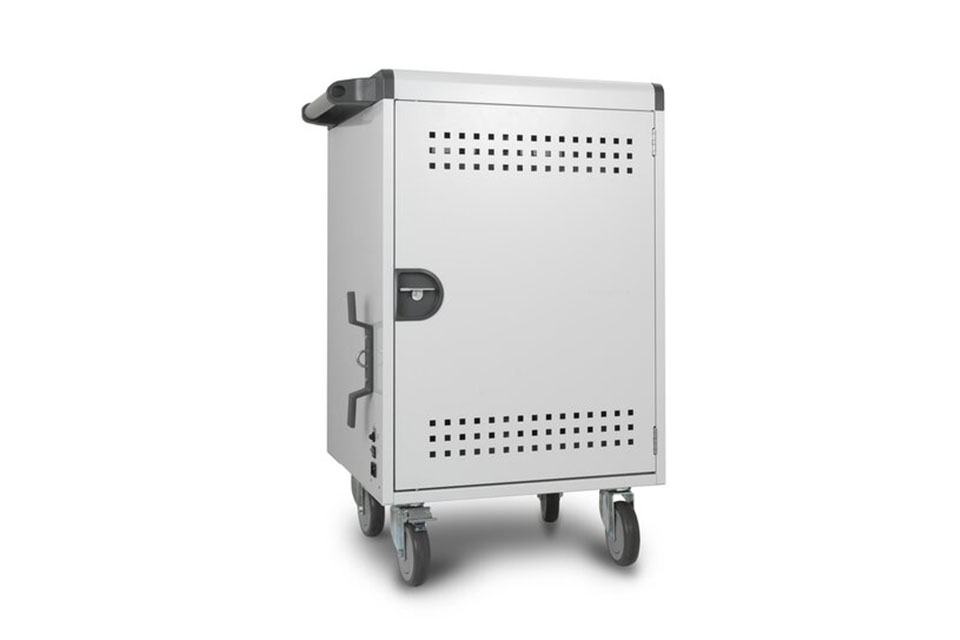
主な特徴
These cabinets often include robust locking mechanisms to prevent theft and unauthorized access, ensuring that valuable devices are protected while they charge. Additional safety features may include overload and short circuit protection, which are critical for preventing electrical hazards during charging.
Electric Vehicle (EV) Charging Cabinets
EV charging cabinets are specialized enclosures designed to house and protect the electrical components necessary for charging electric vehicles. These cabinets not only serve as protective containers but also incorporate features like circuit breakers, smart metering, and user authentication systems. Their design is tailored to withstand diverse environmental conditions, making them ideal for outdoor installations at residential complexes, commercial premises, or public charging stations.
User Experience and Technology Integration
Many EV charging cabinets are equipped with user-friendly interfaces, such as touch screens, to simplify the charging process for users, including those who may be unfamiliar with electric vehicle charging. The integration of smart technologies allows for real-time data tracking and remote monitoring, enhancing user experience and operational efficiency.
Safety Regulations and Certifications
When selecting a charging cabinet for your devices, it is crucial to consider the safety regulations and certifications that ensure compliance with industry standards. These certifications not only guarantee the safety and reliability of the charging equipment but also help in creating a trustworthy charging environment for users.
Key Safety Standards
Charging cabinets must adhere to various safety standards, such as the VDMA 24994, which is specifically designed for battery storage and charging systems. This standard is recognized as one of the strictest, focusing on preventing battery fires and ensuring the safe containment of batteries during charging operations. Additionally, Underwriters Laboratory (UL) certifications, including UL 1487, verify that products meet rigorous safety and performance criteria, helping to mitigate risks associated with electrical faults and overheating.
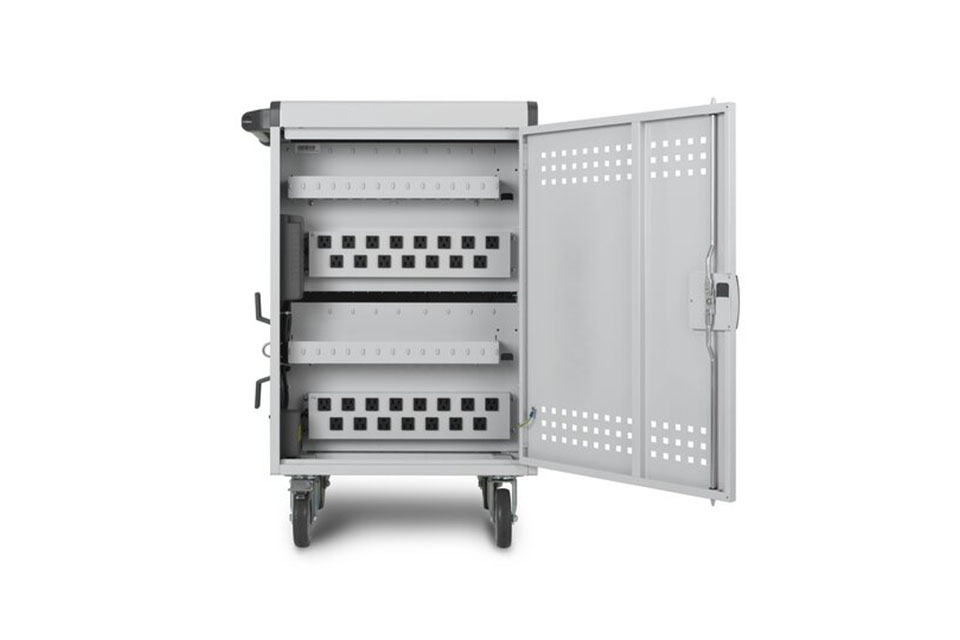
Important Certifications
CE Certification
The Conformité Européene (CE) marking signifies that products comply with health, safety, and environmental protection standards within the European Economic Area (EEA). For charging cabinets, CE certification ensures that the equipment meets essential safety requirements, such as electrical safety and electromagnetic compatibility (EMC).
ENERGY STAR Certification
The ENERGY STAR certification focuses on energy efficiency, indicating that chargers consume less energy during operation and standby modes. Products with this certification are recognized for their performance in minimizing energy usage, contributing to both cost savings and environmental sustainability.
CTEP Certification
The California Type Evaluation Program (CTEP) certification is particularly important for electric vehicle (EV) chargers, ensuring that they comply with measurement standards established by the National Institute of Standards and Technology (NIST). CTEP certification builds consumer trust by guaranteeing that charging stations provide accurate billing based on energy dispensed.
Additional Certifications
Other certifications, such as the Federal Risk and Authorization Management Program (FedRAMP) for cybersecurity, are also vital for ensuring the integrity of payment and user data within charging stations. Compliance with RoHS (Restriction of Hazardous Substances) regulations further enhances the safety profile of charging cabinets by limiting hazardous materials used in their construction.
By ensuring that charging cabinets have the appropriate safety certifications, users can select products that prioritize safety, efficiency, and reliability, thereby creating a secure environment for charging devices.
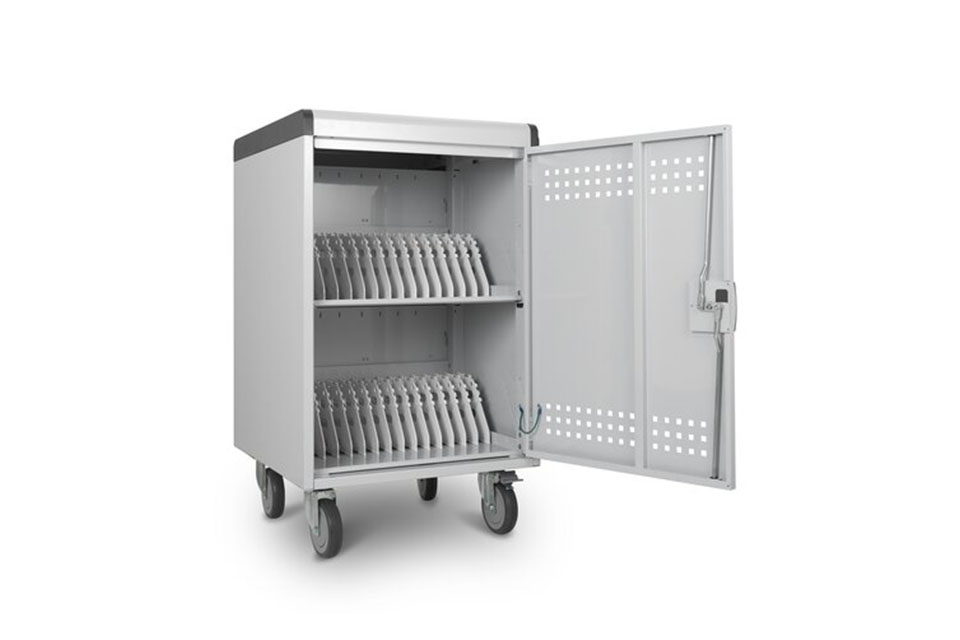
Key Features to Consider
When selecting a charging cabinet for your devices, several key features should be taken into account to ensure optimal functionality, safety, and convenience.
セキュリティ機能
Security is a significant consideration for any charging cabinet. Features like secure locking options and robust construction can help protect your devices from theft or damage. It’s beneficial to choose cabinets that offer customizable locking solutions and are constructed from durable materials to withstand daily use.
Temperature Control Systems
One of the primary features to look for in a charging cabinet is an effective temperature control system. Many modern cabinets utilize natural or mechanical ventilation to maintain a cool internal environment, which is crucial for the safe charging of batteries. This feature helps prevent overheating, ensuring that devices are charged efficiently without risk of damage.
Built-in Electrical Systems
A built-in electrical system is essential for safe and effective charging. This allows for the simultaneous charging of multiple batteries through several power points. Additionally, such systems often incorporate intrinsically safe electrical work, minimizing the risk of electrical issues and enhancing user safety.
Versatility and Configuration
The ability to customize the charging cabinet according to specific needs is another vital aspect. Many systems offer various configurations, dimensions, and design options that allow users to tailor the cabinet to fit different types of devices or spaces. This flexibility is crucial for environments that require a wide range of specifications.
Compatibility and Capacity
Ensure that the charging cabinet can accommodate the devices you intend to charge, including their power requirements. Look for cabinets that support a variety of devices, including laptops, tablets, and smartphones. Some cabinets can charge up to 32 devices simultaneously, making them ideal for educational or commercial settings.
Safety and Compliance Standards
When choosing a charging cabinet, it’s essential to consider compliance with safety standards. Equipment that does not meet regulatory guidelines can lead to serious consequences, such as warranty voiding and exposure to safety risks. Selecting cabinets that comply with recognized safety standards can help mitigate these risks and ensure the safety of both users and devices.
Maintenance and Inspection
Lastly, routine maintenance and inspection capabilities should not be overlooked. A reliable charging cabinet should allow easy access for inspections and maintenance, helping to ensure long-term performance and safety. It is advisable to establish a regular inspection schedule and document any maintenance work to stay compliant with safety regulations.
By carefully considering these key features, you can choose a charging cabinet that best fits your requirements, ensuring safe, efficient, and reliable charging for your devices.
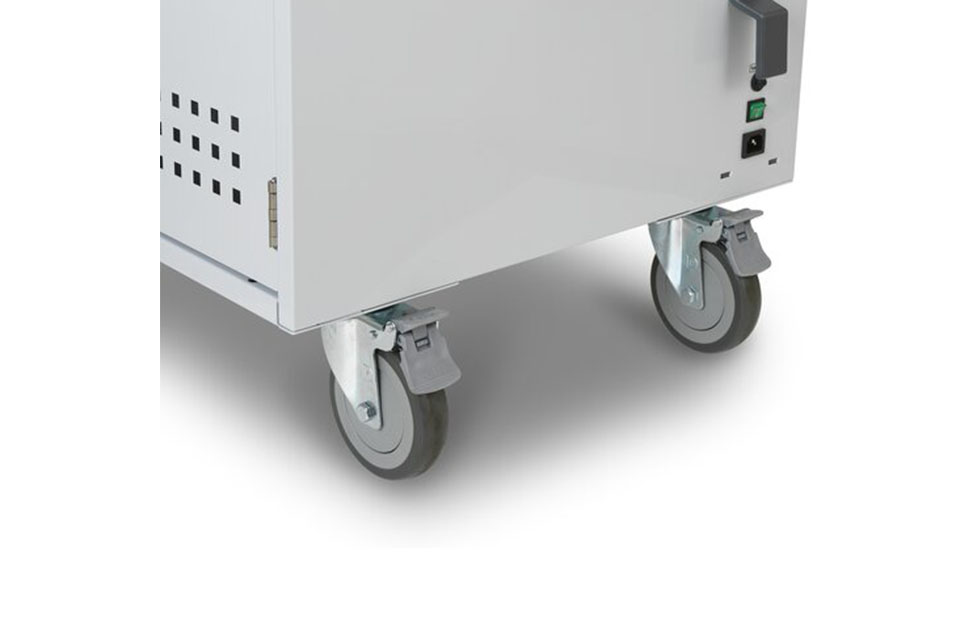
Common Hazards and Mitigation Strategies
Electric vehicle (EV) charging stations and lithium-ion battery storage present several hazards that property managers must address to ensure safety. Key hazards include fire risks, electrical shock, and the release of hazardous substances.
Fire Hazards
Lithium-ion batteries are particularly susceptible to fire due to conditions like thermal runaway, which can be triggered by overheating, physical damage, or improper charging practices. When a battery cell undergoes thermal runaway, it can ignite and potentially cause adjacent cells to catch fire, leading to severe fire outbreaks within minutes. This underscores the necessity for controlled charging environments that include non-combustible surfaces and effective ventilation to mitigate the risk of fires.
To prevent fires, battery charging should be conducted in environments equipped with fire-rated storage solutions. Fire suppression systems, signage to alert staff of potential hazards, and compliance with relevant safety standards, such as Underwriters Laboratory 1487 (UL 1487), are crucial measures for managing fire risks associated with EV charging stations.
Electrical Shock Risks
Another significant hazard is the risk of electrical shock, particularly from damaged chargers or improper wiring. Different levels of charging stations deliver various voltages, and maintenance is critical to ensuring that charging cables and equipment are in good condition. Integrated safety features, such as residual current devices (RCDs), can enhance safety by providing an additional layer of protection against electrical faults.
Chemical Hazards and Toxic Exposure
The improper storage and charging of lithium-ion batteries can lead to the release of hazardous substances, including toxic gases and corrosive materials, which pose risks to workers’ health. For instance, during a fire, lithium batteries may release gases like hydrogen fluoride, which require specialized filtration and ventilation systems to mitigate exposure risks.
Battery charging cabinets designed for safety can help control these hazards. They often include features that facilitate cooling, prevent overcharging, and contain fires effectively, thereby reducing the likelihood of incident escalation and protecting both personnel and property.
By understanding these hazards and implementing appropriate mitigation strategies, organizations can significantly enhance the safety of their EV charging infrastructure and battery storage practices.
Additional Features
When selecting a charging cabinet for your devices, several additional features can enhance functionality, security, and user experience.
Built-in Electrical System
A robust electrical system is crucial, allowing for the simultaneous charging of multiple batteries. These systems are designed to be intrinsically safe, minimizing the risk of electrical issues while promoting efficient charging cycles. This feature is particularly important in environments where numerous devices need to be powered at once.
Security Options
Security is a significant consideration when choosing a charging cabinet. Many models come equipped with secure locking options, which protect valuable electronics against theft and damage. Some cabinets can be secured to tables or desks using mounting plates or Kensington cable locks. This added layer of protection is essential for organizations that manage shared devices.
Fast Charging Technology
Many modern charging cabinets utilize advanced fast charging technologies, such as PD 3.0. This technology allows for rapid and simultaneous charging of compatible devices, ensuring they are ready for use quickly, which is particularly beneficial in busy settings. The ability to accommodate various devices, including USB-C® products, without the need for multiple adapters adds to their versatility and long-term usability.
Interactive Features
Incorporating interactive elements into charging stations can significantly enhance user engagement. Features like digital screens allow for multimedia advertisements or interactive content, providing value to users while they charge their devices. This not only transforms the charging experience into an engaging opportunity but also boosts marketing efforts by keeping customers occupied and involved with the brand during their wait.
Cooling Systems and Protection Features
Effective cooling systems are essential to prevent overheating during charging, as well as to provide voltage protection and promote cycle charging. Many cabinets are designed with intuitive features that ensure devices are charged efficiently and safely. Some even include UV lighting systems that clean devices while they charge, ensuring a hygienic experience.
Customization and Flexibility
The ability to customize the charging cabinet is another important feature. Various modules and configurations allow for tailored solutions to meet specific requirements, whether for a drawer cabinet, workbench, or shelving system. These flexible designs can adapt to different environments and user needs, enhancing the overall utility of the charging cabinet.
使用例
教育機関
Charging carts and lockers are increasingly being adopted in educational settings to enhance classroom efficiency and technology management. With the rise of digital tools in education, laptops and tablets have become essential for both teaching and learning. However, the need for secure storage and charging solutions is paramount to minimize disruptions and protect valuable technology assets. Charging carts and lockers allow schools to keep devices organized, fully charged, and secure, ultimately facilitating a more streamlined educational experience. For larger institutions, mobile charging carts can be particularly beneficial, while smaller or security-conscious schools may prioritize stationary charging lockers.
Healthcare Facilities
In healthcare settings, charging stations and cabinets play a crucial role in enhancing patient satisfaction and ensuring that essential devices remain powered. Hospitals often face long wait times, making it critical to provide charging solutions for visitors and staff alike. Charging cabinets can serve multiple purposes, such as offering secure phone storage while allowing devices to charge, which improves convenience for both patients and healthcare professionals. Moreover, these stations can be strategically placed to communicate vital facility information and enhance the overall visitor experience.
Corporate Environments
Corporate offices also benefit from the integration of charging cabinets into their workspace design. With the proliferation of personal devices, employees require accessible and secure locations to charge their gadgets throughout the workday. Charging cabinets can help organizations maintain a clutter-free environment by providing designated spaces for device storage and charging. Furthermore, ensuring that devices are always charged enhances productivity and reduces downtime caused by low battery issues, allowing employees to focus on their tasks without unnecessary interruptions.
公共スペース
Public venues, such as libraries, airports, and shopping malls, can utilize charging cabinets to meet the growing demand for device charging solutions among visitors. By installing secure 充電ステーション, these establishments enhance customer satisfaction, allowing patrons to recharge their devices while enjoying their time on-site. This service can also serve as a potential revenue stream for businesses, particularly in high-traffic areas where patrons may be willing to pay for charging access.



